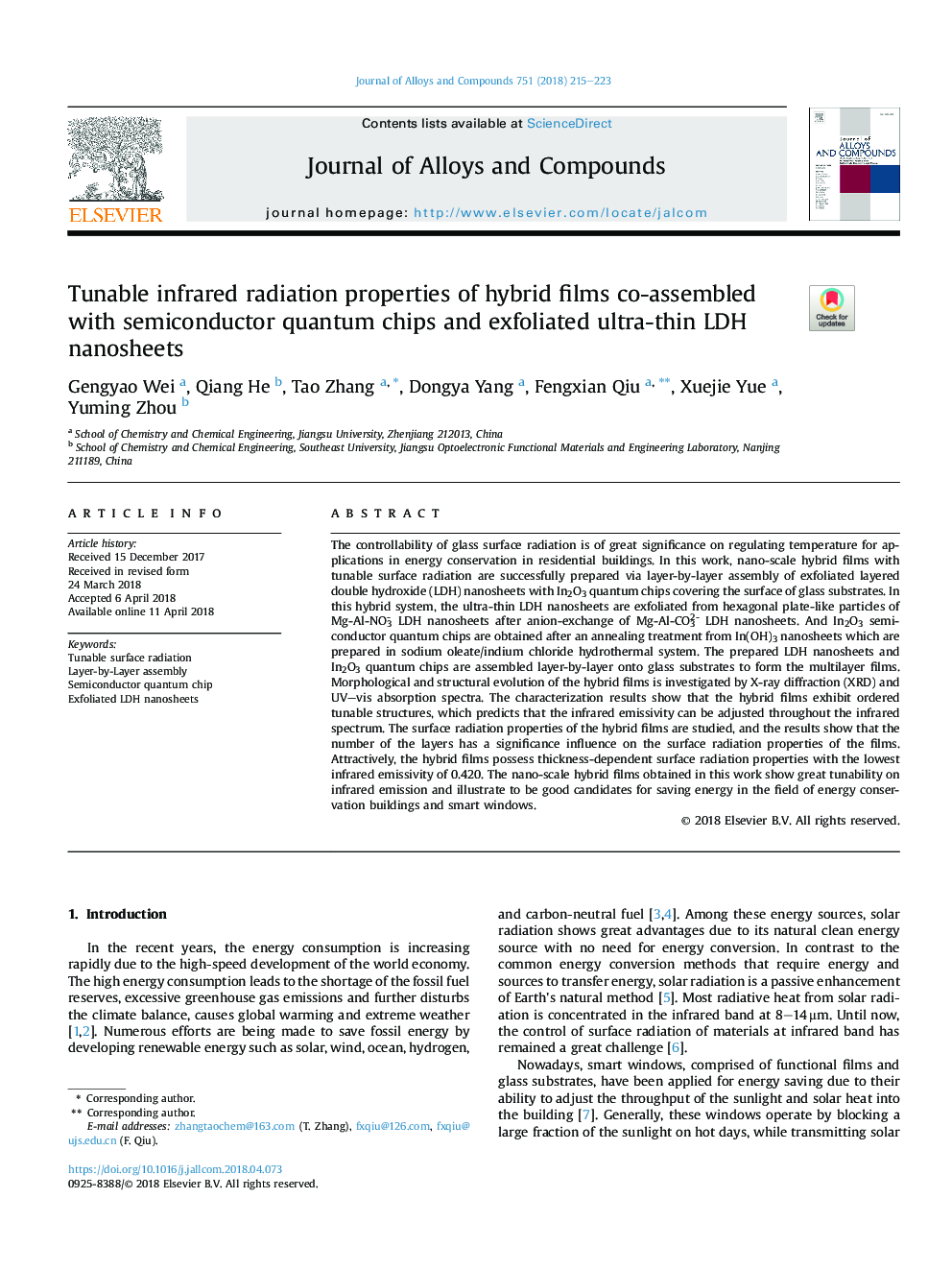| Article ID | Journal | Published Year | Pages | File Type |
|---|---|---|---|---|
| 7991680 | Journal of Alloys and Compounds | 2018 | 9 Pages |
Abstract
The controllability of glass surface radiation is of great significance on regulating temperature for applications in energy conservation in residential buildings. In this work, nano-scale hybrid films with tunable surface radiation are successfully prepared via layer-by-layer assembly of exfoliated layered double hydroxide (LDH) nanosheets with In2O3 quantum chips covering the surface of glass substrates. In this hybrid system, the ultra-thin LDH nanosheets are exfoliated from hexagonal plate-like particles of Mg-Al-NO3- LDH nanosheets after anion-exchange of Mg-Al-CO32- LDH nanosheets. And In2O3 semiconductor quantum chips are obtained after an annealing treatment from In(OH)3 nanosheets which are prepared in sodium oleate/indium chloride hydrothermal system. The prepared LDH nanosheets and In2O3 quantum chips are assembled layer-by-layer onto glass substrates to form the multilayer films. Morphological and structural evolution of the hybrid films is investigated by X-ray diffraction (XRD) and UV-vis absorption spectra. The characterization results show that the hybrid films exhibit ordered tunable structures, which predicts that the infrared emissivity can be adjusted throughout the infrared spectrum. The surface radiation properties of the hybrid films are studied, and the results show that the number of the layers has a significance influence on the surface radiation properties of the films. Attractively, the hybrid films possess thickness-dependent surface radiation properties with the lowest infrared emissivity of 0.420. The nano-scale hybrid films obtained in this work show great tunability on infrared emission and illustrate to be good candidates for saving energy in the field of energy conservation buildings and smart windows.
Keywords
Related Topics
Physical Sciences and Engineering
Materials Science
Metals and Alloys
Authors
Gengyao Wei, Qiang He, Tao Zhang, Dongya Yang, Fengxian Qiu, Xuejie Yue, Yuming Zhou,
